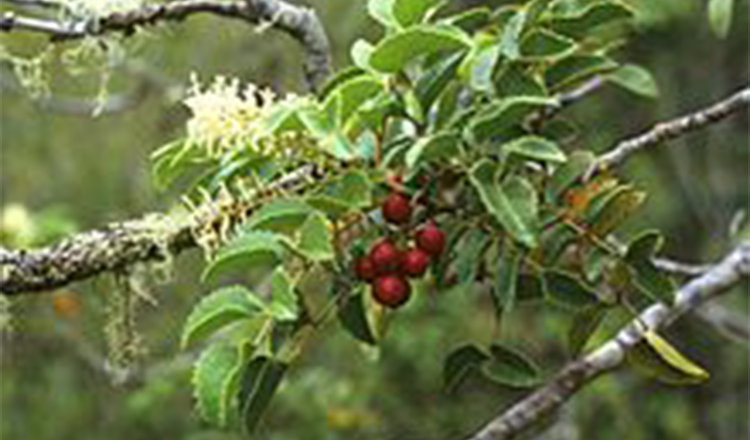Gevuina

Gevuina avellana (Chilean hazelnut, avellano chileno in Spanish) is an evergreen tree, up to 20 meters (65 feet) tall. It is the only species currently classified in the genus Gevuina. It is native to southern Chile and adjacent valleys in Argentina. It is found from sea level to 700 meters (2300 feet) above sea level. Its distribution extends from 35° to 44° south latitude.[A] The composite leaves are bright green and toothed, and the tree is in flower between July and November. The flowers are very small and beige to whitish, are bisexual and group two by two in long racemes. The fruit is a dark red nut when young and turns black.[1] The peel is woody.[1] It can grow up straight or branched from the soil, making up either a tree or a shrub.[1]
The name Gevuina comes from guevin, the Mapuche Indian name for the Chilean hazel.[3] The origin of the Spanish name, avellano come from the fact the Spanish settlers found the nuts similar to the hazelnuts they knew from Europe.[1] Yet the species are not closely related.[1]
The concentration of Gevuina avellana in forest is highly irregular and difficult to predict.[1] It may grow on flatland or hilly terrain, in clay or stony soils.[1] Usually Gevuina avellana grows in association to other broad-leaved trees such as Nothofagus obliqua, Nothofagus dombeyi, Nothofagus alpina, Nothofagus glauca or Laureliopsis.[1] Yet it does also grow in associations dominated by the conifers Austrocedrus, Fitzroya and Pilgerodendron.[1] As such Gevuina avellana does not form pure stands.[1]
